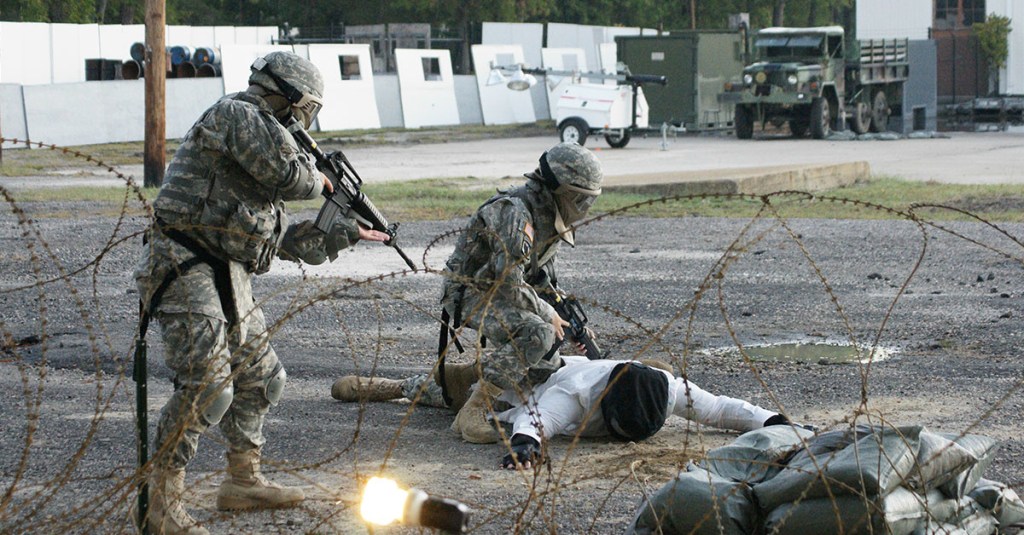When allied forces man the front lines, it’s fairly common to come in contact with local nationals that live in the area. Although the majority of the people you’ll encounter out there want nothing to do with international politics, those who are fighting against you will find it easy to blend into their surroundings, remaining undetected. Our nation’s enemies don’t wear a standardized uniform, making them incredibly tough to safely identify and detain.
For the most part, all residents are treated as innocent bystanders — until they give troops a reason suspect otherwise. When ground forces encounter a threat among the local population, troops must take every precaution in order to maintain safety for all — the threat of explosive attack is constant.
These are the five critical rules to detaining an enemy that just might save the lives of troops and bystanders alike.

Iraqi commandos with the 7th Iraqi Army Division practice detainee handling during a course taught by Reconnaissance Marines with 2nd Platoon, Bravo Company, 1st Reconnaissance Battalion, Regimental Combat Team 8, Apr. 7, 2009, at Al Asad Air Base, Iraq.
(Photo by Marine Sgt. Eric C. Schwartz)
Search them
For obvious reasons, every detainee needs to be thoroughly searched for any type of weaponry or intelligence they may possess. Finding these items may be tough, as there are plenty of ways and places to hide contraband on a person.

Shhhh!
(Photo by Marine Cpl. Kenneth Jasik)
Silence is key
All detainees should remain quiet until trained personnel can arrive at the scene to carry out questioning. Remaining silent is also essential for the troops who are handling the detainee — you must be careful about divulging any information, even if it seems innocuous, within earshot of the EPW.
A good rule of thumb is to only speak in two sentences when exchanging instructions with fellow troops.
Segregate them
If you have multiple detainees, it’s vital that you separate them before conducting searches. Typically, we divide detainees by rank and gender. If detainees can see or hear each other, they can coordinate escape attempts or further hostile action.

A detainee is safeguarded in restraints before being escorted by two U.S. troops while at Guantanamo Bay, Cuba.
Safeguard everyone
As proven so many times before, the enemy is often willing to hurt themselves beyond all repair to bring you closer to death. Taking protective measures to ensure a detainee isn’t able to cause any further injury is critical. This also means preventing allied forces from bringing harm to the EPW.
Maintain speed
Once the enemy is under friendly control, it’s up to allied personnel to promptly escort the detainee to a safe place to await processing. Moving quickly lessens the chance of a deadly, secondary encounter with an enemy who is out to kill the both detainee and their captors.


























